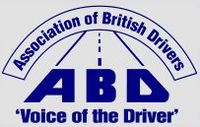Don't Become Another 'Overturned Caravan' Statistic
 |
LONDON, UNITED KINGDOM – July 28, 2009: As the holiday season gets into full swing, make sure your caravan doesn't do the same!
ABD spokesman and keen caravanner Paul Biggs offers some safety tips on how to avoid a 'snaking' situation where the caravan swings from side to side. In the worst case scenario, the caravan can swing right round and hit the side of the towing vehicle, causing the whole outfit to spin and overturn.
First and foremost, the caravan and car combination should be well matched. A fully laden caravan should ideally not exceed 85% of the weight of the car, particularly for beginners. Car manufacturers specify a maximum towing weight, which should not be exceeded and may be less than the 85%. Make sure that a tow bar specific to your vehicle is professionally fitted. Don't exceed the recommended caravan nose weight on the tow ball. The optimum nose weight for a caravan is generally regarded as being 7% of its laden weight.
Towing stability is dependent on how the caravan is loaded. Heavy items should be placed over and in front of the caravan axle, but not towards the rear of the caravan or high up in lockers. Items can be arranged to adjust the caravan nose weight to suit the tow car. Check the nose weight with a nose weight gauge.
Fit a stabiliser, but remember that a stabiliser is no substitute for a carefully loaded caravan.
Ensure that the caravan tyres are in good condition and inflated to the caravan manufacturers recommended pressure. Unlike car tyres, caravan tyre tread rarely wears out due to the low mileages travelled. However, other dangerous defects can develop due to lack of use and ageing. Look for signs of cracking, splitting or flat spots due to standing in one position. Replace the tyres every 5 years as a matter of course, even if they look okay. Make sure the wheel nuts are tightened to the correct torque using a torque wrench. Punctures or blow-outs can happen to even the most careful caravanners, but fitting 'Tyron Safety Bands' provides a short 'run flat' capability, enabling you to drive to a place of safety without the flat tyre coming off or away from the wheel.
Don't forget that the car tyre pressures may need to be inflated for towing - front and rear tyre inflation pressures will specified in the car handbook.
On the road, remember that your car-caravan combination will take longer to stop. Keep a safe distance from the vehicle in front and brake gently unless an emergency stop is required. In 70mph limits caravans are restricted to 60mph, and to 50mph in 60mph limits. Try not to build up too much speed and momentum downhill as this is when snaking is most likely to occur. Being overtaken by a large vehicle can also induce snaking. Crosswinds can affect stability and may dictate a lower speed. If the caravan begins to snake, don't accelerate or brake. Lift off the accelerator to allow engine braking and loosen your grip on the steering wheel until the snaking is brought under control, then gently accelerate back up to speed.
Finally, a caravan should be professionally serviced every 12 months regardless of how few miles have been travelled.


